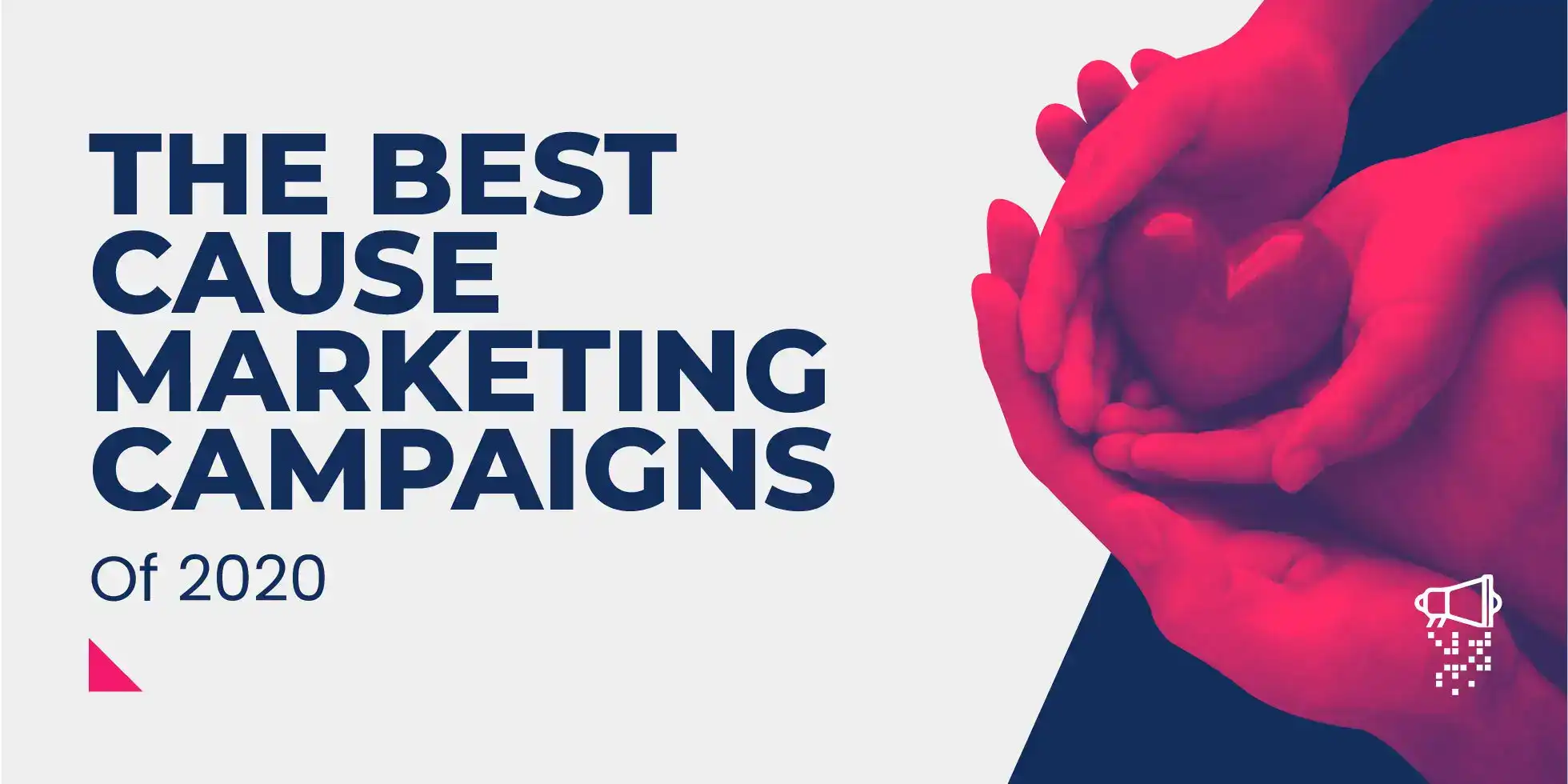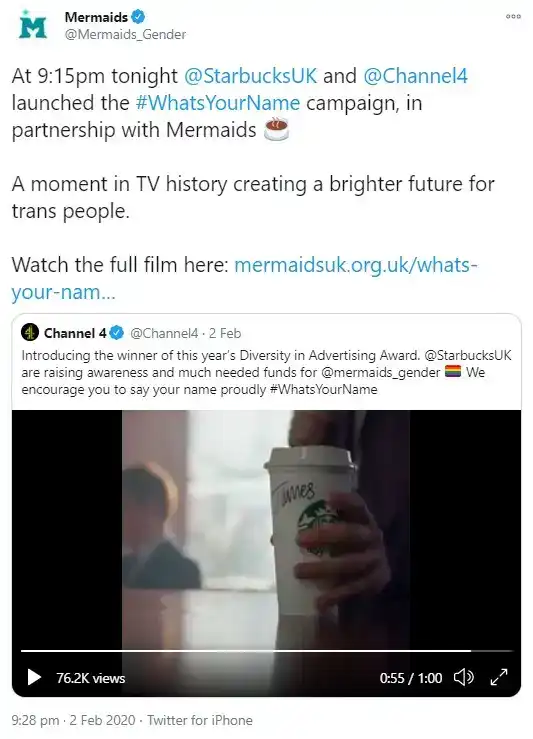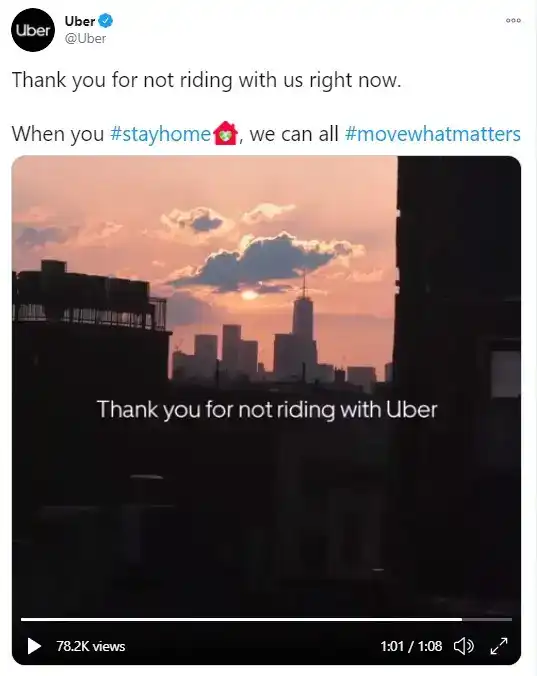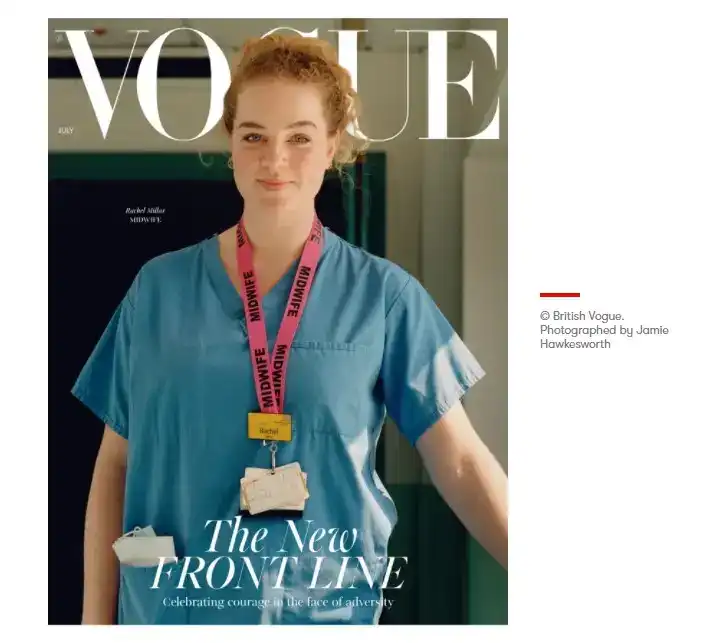
Best Cause Marketing Campaigns of 2020
2020 has been a year of raw emotion, struggle and adversity, with events of police brutality, warnings of irreversible global warming and a global pandemic at the forefront of consumer minds.
With that in mind, cause has become paramount to consumers, and some of the greatest marketing campaigns of 2020 appear to have successfully drawn on this, creating some of the best cause campaigns of this year.
In an attempt to bring these together, our SEO company and digital PR agency experts have researched and analysed some of the most innovative and meaningful ways that brands have combined marketing techniques with socio-political issues and run successful campaigns even in the most unique and challenging times.
In this blog, we will delve deep into some of the best cause marketing campaigns of 2020.
Starbucks - LGBT+ What’s Your Name?
At the start of 2020, Starbucks released the #WhatsYourName campaign which sought to illustrate the transition of a transgender person as they embark on trialling a new name. The campaign depicts Starbucks as a safe place to do so.
The campaign is incredibly powerful since it is founded on lived experiences, meaning although the audience is slightly more specific, it resonates strongly with the individuals targeted. In fact, the campaign was inspired by stories shared by transgender customers via social media about how they used Starbucks’ service system to trial new names and determine which suited them best.
Throughout the extended version of the advert, we see a young trans person as they struggle to be seen for who they really are, navigating their way through life as they are frequently labelled by the name given to them at birth, Jemma. However, the advert concludes when a member of Starbucks’ staff is serving the young person and asks them what their name is, providing them with the outlet to express who they really are. As the barista calls out the chosen name, James expresses a sense of release and acceptance.
Most intelligently of all, Starbucks were able to tie together their practice of writing names on cups which is immensely popular with their consumers, and the way this might provide autonomy, freedom and acceptance to those within the transgender community. This coherent link means the idea appears very organic and natural, opposed to artificial.
 The campaign also thrived because it was informed, namely due to Starbucks’ partnership and collaboration with Mermaids, a charity which supports young transgender and gender diverse groups. Throughout the campaign development, Starbucks and their creative agency were conversing with Mermaids and incorporating their insight, guidance and experiences into the campaign. Since the charity was involved in the process from every stage, from casting to editing, the entire campaign feels very authentic to the cause it seeks to promote.
The campaign also thrived because it was informed, namely due to Starbucks’ partnership and collaboration with Mermaids, a charity which supports young transgender and gender diverse groups. Throughout the campaign development, Starbucks and their creative agency were conversing with Mermaids and incorporating their insight, guidance and experiences into the campaign. Since the charity was involved in the process from every stage, from casting to editing, the entire campaign feels very authentic to the cause it seeks to promote.
The cause campaign is also supplemented by real action by Starbucks, since they have been selling mermaid tail-shaped cookies and donating a portion of the proceeds to the Mermaids charity which supports transgender young people.
It is the authentic portrayal of lived transgender issues, strong ties to business practice and real action that makes Starbucks’ ‘What’s Your Name’ one of the best cause marketing campaigns of 2020.
Nike - You Can’t Stop Us
Released in the middle of 2020 and in the midst of the global pandemic, Nike’s cause campaign ‘You Can’t Stop Us’ is another great campaign to come out of 2020 - specifically the third film in the series. The advert conveys topical messages of perseverance and inclusivity at a time where these were needed the most across the globe.
The split-screen film transitions seamlessly through momentous sporting moments and includes some of the planet’s most renowned athletes, with LeBron James, Serena Williams, Colin Kaepernick, Naomi Osaka and Christiano Ronaldo among the 53 featured.
The breadth and depth of content made this campaign so simple, yet so powerful. The creative team behind the campaign screened and collated 4,000 pieces of footage, from 24 different sports, to select the perfect images that draw parallels and have underlying similarities. The final film featured various sports, years, abilities, genders and ethnicities to portray the message of unity and inclusivity during a time where individuals are particularly divided.
The spoken and visual narrative detailed adversity, unity against police brutality and how the pandemic tried to put sport at a standstill, albeit unsuccessfully. Since the campaign was both timely and upbeat, the montage had a meaningful message and brought inspiration, comfort and motivation to many consumers.
In terms of reach, the powerful advert went viral and was shared countless times amongst social media platforms - both personal and professional. In fact, at the time of this post, the clip has accumulated over 58 million views on YouTube and has been praised by many for its inclusion and juxtaposition of both disabled and able-bodied male and female athletes and a diverse range of ethnicities.
What makes this one of the best cause marketing campaigns of the year is the broad yet clear and succinct messaging to persevere, unite and strive in the face of adversity and discrimination, all whilst depicting some of the most notorious sporting occasions of all time. The timing of Nike’s campaign was also well executed, since it came at a time of political outrage and concern yet contradicted the negative rhetoric spread throughout the media by presenting a more positive and promising message which enabled it to stand out in an incredibly noisy time.
Uber - Thank you for not riding
Another simple yet highly effective cause campaign was that belonging to Uber, which took centre stage during the pandemic in April 2020.
The short film which came as a thanks to consumers for not riding with Uber encapsulates much of the activities, feelings and atmosphere individuals around the world quickly became accustomed to during lockdown, which gave the 75-second clip an authentic feel and enabled it to resonate with a broad audience. 
Perhaps most staggering about the campaign is that it appeared counterintuitive to the brand’s purpose and profitability, suggesting that Uber put the cause and purpose before their commercial gain, which was particularly powerful in and of itself. In fact, Uber is a brand that is synonymous with movement, so to credit individuals for not moving is a stark contrast, and one that certainly garnered attention.
The shift in mission for Uber was a particularly wise one. In fact, Uber accepted the inevitable halt in ride-hailing very quickly and sought to discover how to redefine itself and utilise its unique resources and ability to benefit the communities it typically serves. As part of this, Uber’s initiatives included the provision of free transport for healthcare workers, supporting restaurants by waiving delivery charges, and providing free cooked meals for responders. Owing to the particularly harsh criticism Uber has faced in failing to protect driver livelihoods in particularly poor countries and failing to ensure safety and security for riders on numerous occasions, this move by Uber served as much needed evidence that the giant could look beyond self when required.
What’s more, the organic nature of the footage included was also heartfelt, as it began to document the rare events and behaviours the world had never envisaged before this year. The film saw people adapting to tasks, distancing from friends and families and continuing to live in and navigate the ‘new normal’. Since the footage portrayed a diverse range of individuals and families, the clip conveyed an intimate and real sense of togetherness and unity.
Vogue - Frontline Workers
 Another outstanding cause campaign to come from the pandemic belonged to Vogue and featured three frontline workers on duty. Interestingly, this particular campaign took to traditional media platforms to convey an important message, since the campaign involved a trio of empowering women working on the frontline of the pandemic on the cover of Vogue in July.
Another outstanding cause campaign to come from the pandemic belonged to Vogue and featured three frontline workers on duty. Interestingly, this particular campaign took to traditional media platforms to convey an important message, since the campaign involved a trio of empowering women working on the frontline of the pandemic on the cover of Vogue in July.
With the title of “The New Front Line”, the goal was to represent and honour the extraordinary key workers and their bravery, from postal workers and teachers, to midwives and carers. With the nation taking to their doorsteps to applaud key workers for their work and sacrifices, the message was one that resonated with the UK, and as did the faces that featured within the ad. In fact, the full 20-page portfolio sought to depict the millions of individuals who got dressed in their uniforms and went out to continue their service during the height of the pandemic, delivering newborns, transporting key workers and keeping families connected.
Like most of the campaigns featured in this post, Vogue’s cause campaign was simple and authentic. The photographer, Jamie Hawkesworth took to capturing the front cover images with just a bicycle, camera and his face mask. Contrary to most Vogue front cover shoots featuring famous faces that have spent hours in hair and make up with specially picked outfits, the front covers showed raw images of ordinary people in action, kitted with nothing but their uniform.
For Vogue to diverge so dramatically from their typical iconic cover style to represent key workers was a bold yet successful message from the brand. Most striking of all is the idea that the campaign has allowed people to notice beauty in normality, and the extraordinary in the ordinary, all whilst drawing attention to the cause of respecting and crediting key workers during one of the most challenging times to face the nation.
The Vogue campaign was not limited to print media either, however, as there is also a 3 minute long video on YouTube which presents a day in the life of the three key workers that took centre stage. What’s more, all of the 27 key worker portraits have been auctioned at a virtual exhibition, whereby each 16 x 12” print is flogged for £2,000, with all proceeds donated to the National Emergencies Trust which seeks to support vulnerable people in the midst of crises.
Where do brands go from here?
Seemingly, cause campaigns in 2020 have seen success in their simplicity and use of raw, lived experiences. More than ever before, individuals have conveyed a strong desire for unity as a result of the pandemic, so fixating on the things that bring us together, like Nike and Uber did, has proven all important to campaign success.
As issues become more polarised and divisive in future years, which they inevitably will, consumers will expect brands to be bold and engage with real world issues opposed to sitting on the fence. In fact, recent research from YouGov says that 68% of consumers are expecting brands to stand up for the issues that matter, and delve into the debate on social and environmental causes.
However, timing will also grow in importance, which is a significant consideration for marketing campaigns. The pandemic managed to do the unimaginable and bring pre-planned business and campaigns to a halt. Instead, brands are increasingly going to need to focus on reactive campaigns on pressing issues, since these invariably resonate better with individuals and frequently take centre stage.
Whilst the causes of the upcoming year cannot be predicted with certainty, it is clear that strong research on lived experiences and reactive and bold messages will remain prominent ingredients in the recipe for a great cause marketing campaign.
